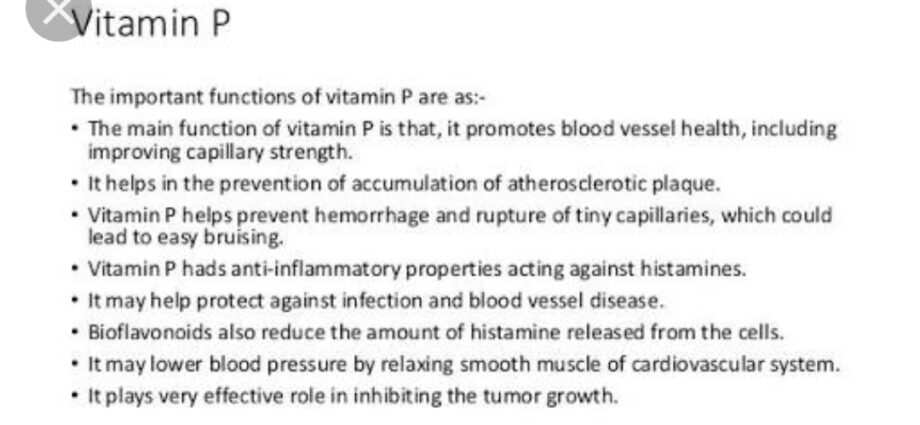Contents
Vitamin P, or Why are bioflavonoids useful?
Vitamin P is not strictly a vitamin. These are just vitamin-like substances, better known as flavonoids or bioflavonoids. They are a wide variety of compounds found in plants and are classified as plant pigments. It is these pigments that give bright, juicy colors to fruits and flowers.
Benefits of bioflavonoids: how is vitamin P beneficial?
Vitamin P Health Benefits
Flavonoids are divided into different groups, each of which has its own special benefits, but all flavonoids are powerful antioxidants that can resist free radicals (damaging body cells and thereby accelerating the aging process and contributing to the development of many degenerative diseases such as cancer, Alzheimer’s, Parkinson’s) ). They also prevent colds, help avoid inflammation, and promote healthy capillary circulation. Also, all flavonoids increase the absorption of vitamin C, which strengthens the walls of blood vessels and promotes blood clotting during prolonged bleeding.
Flavonoids belong to a large group of beneficial plant compounds known as polyphenols
Citrus flavanoids are often used in the treatment of sports injuries as they relieve swelling, help heal bruises, and relieve pain. Quercetin, one of the most abundant and active flavonoids, has anti-inflammatory, antiviral and anti-allergic properties. Rutin, another flavonoid, thins the blood and circulation. Some doctors recommend rutin for the treatment of varicose veins, glaucoma, and allergies, but this treatment is still experimental. Catechins (also related to vitamin P) lower blood pressure and blood sugar and fight bacteria.
Foods containing vitamin P
Almost all vegetables, fruits and spices contain bioflavonoids.
The best sources are:
- fruits such as oranges, lemons, limes, tangerines, and plums
- berries, such as blackberries, black currants, strawberries, raspberries
- vegetables such as carrots, tomatoes, green peppers, onions, and garlic
- spices and aromatic herbs
Heat treatment can lead to significant loss of flavonoid content in food – 50% or more
The richest in flavonoids, namely catechins, is green tea. One cup of freshly brewed tea contains up to 100 milligrams of bioflavonoids. There is also vitamin P in red wine – about 15 mg per 100 grams. Spices like cinnamon and turmeric contain about 10 to 25 mg of flavonoids per dose. In 100 grams of raw fruits – peaches, cherries – you will find about 7-10 mg of vitamin P.
Symptoms of vitamin P deficiency and overdose
A diet low in fruits and vegetables can lead to a lack of vitamin P, and a deficiency occurs due to stress, inflammation, the consumption of certain medications, oral contraceptives, which increase the consumption of flavonoids. Lack of vitamin is manifested by frequent nosebleeds and weakening of the immune system. During months when fresh vegetables and fruits are hard to come by, deficiencies can be quickly reversed by taking a variety of vitamin P pills and syrups.
Vitamin overdose is a rare phenomenon, since vitamin P is water-soluble and the excess is excreted in the urine. In rare cases, more often associated with excessive consumption of green tea, an overdose of flavonoids can result in diarrhea.
See also: how to choose the right toothbrush?










